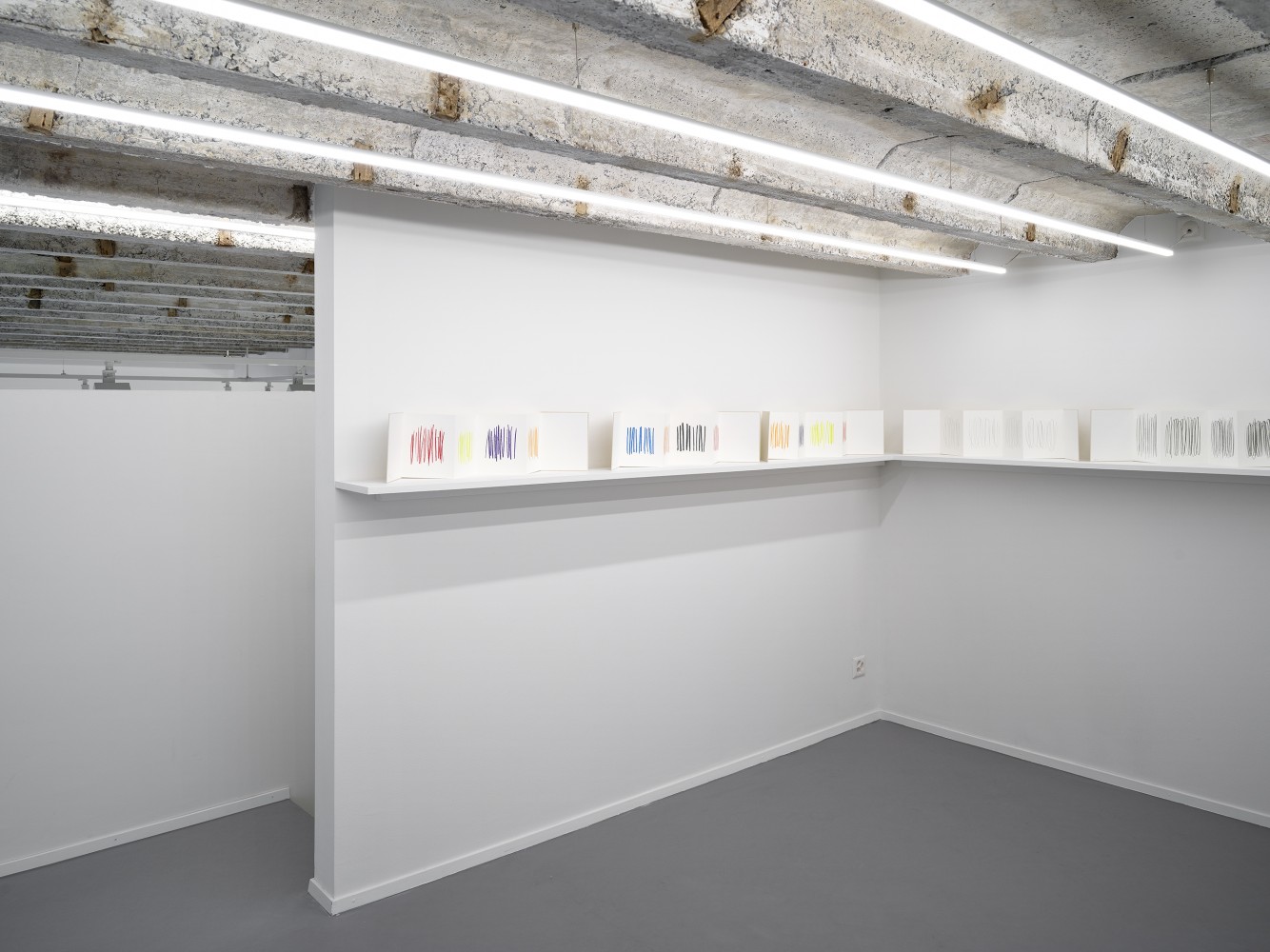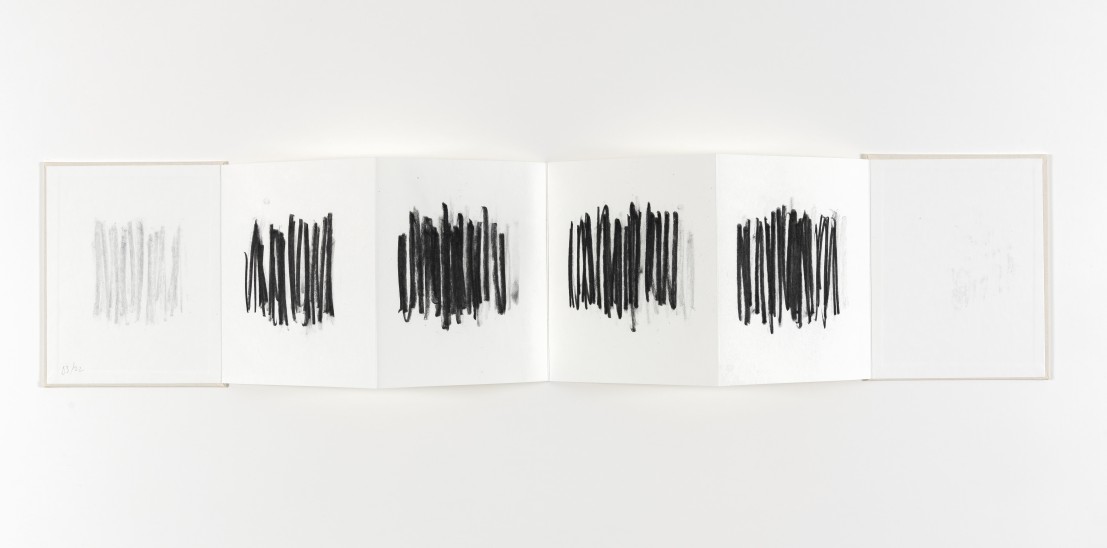
2 September – 4 November 2023

2 September – 4 November 2023
Rämistrasse 5
8001 Zurich · Switzerland
2 September – 4 November 2023
«I still see myself as being an inherently figurative artist, whether that figuration is to do with how I approach the making of a painting or its physicality, how a painting reacts to you, what you bring to it. I do not see my paintings as formal or abstract exercises.» – Callum Innes
Callum Innes was born in Edinburgh in 1962 and studied painting and drawing at Gray‘s School of Art in Aberdeen and Edinburgh College of Art. Following breakthrough solo exhibitions at the Scottish National Gallery of Modern Art in Edinburgh and the Institute of Contemporary Arts in London in 1992, he has gone on to show at major museums and galleries all over the world.
Widely regarded as one of the most important artists of his generation, Innes was short-listed for the Turner Prize in 1995. He won the NatWest Prize for Painting in 1998 and the Jerwood Prize for Painting in 2002 and his work is included in scores of prestigious public collections, including Tate, Centre Pompidou in Paris, Kunsthaus Zürich, Solomon R. Guggenheim Museum in New York, Art Gallery of Ontario in Toronto and the National Gallery of Australia in Canberra.
Innes creates vivid, eloquent paintings, broadly expressive of mood and emotion, that feed off the stuff of everyday life—the buzzy legacy of the first espresso of the morning, a headline half-glimpsed in a newspaper, something seen on the street or overheard on the radio. Mostly he has no idea why these things impinge on his consciousness in the way they do. That they influence his behaviour in the studio is never in doubt.
Trying to unpack these experiences to his own satisfaction might be one of the reasons why Innes paints in series, moving forward in a sequence of carefully choreographed steps marked by subtle and not so subtle variations in colour and form. ‘As soon as I make a work,’ he says, ‘I see whether I can take it further. I make a painting and immediately see where I can take the next painting, and the next one, and the one after that.’
For the best part of thirty years Innes has harnessed the power of repetition as a creative force. Repetition allows the artist to capitalise incrementally on earlier discoveries, but the process comes with its own set of challenges and requires a clear-eyed assessment of risk and reward. At the core of Innes’s practice is a fundamental belief in the artistic value of trial and error, an approach to making that throws up its inevitable quotient of failures. Over the years Innes has become ever more adept at knowing what works and what doesn’t, and he is quick to identify and do away with the failures. What remains are the luminous, lyrical successes.
The current exhibition at Galerie Tschudi features work from two series of Untitled Lamp Black paintings—one circular, the other rectangular—in which layers of oil-based pigment are added to and removed from the support to reveal unexpected swathes of bold, vibrant colour. Although this procedure is highly controlled, Innes admits that he is much freer with paint now than he was in the past. As a consequence the paintings themselves have become increasingly gestural, demonstrably felt.
All six paintings in the show are half-and-half splits along a vertical axis or hinge. The four rectangular paintings on linen relate closely to other paintings in the same series, which stretches back more than a decade, but the two circular paintings on wood represent a major new development.
A couple of years ago Innes was invited to paint on a small cask end for a charity auction organised by the Scotch whisky industry. Out of this first-ever circular painting on wood has come a group of larger circular panels of which Untitled Lamp Black / Quinacridone Gold and Untitled Lamp Black / Magenta are the latest manifestations.
Untitled Lamp Black / Quinacridone Gold is a direct descendent of that first whisky barrel tondo—also called Untitled Lamp Black / Quinacridone Gold—and it is neatly divided into two equal segments. The segment on the right is covered with Lamp Black, a lush, velvety pigment in which the individual strokes of the artist’s brush are clearly visible. Opposite this, light against dark, is a shimmering expanse of Quinacridone Gold, a striking, orange-yellow pigment, intense and diaphanous.
Innes’s paintings are unquestionably abstract, but they are far from mechanical. Looking at the wonderfully opulent passages of Quinacridone Gold in this work from a suitably Scottish perspective, it is impossible not be reminded of the earthy appearance of a heather moorland, the limpid light of a Hebridean sunset or the rich caramel of a smoky Highland malt.
Driven by an unquenchable desire to paint compelling paintings, Innes has achieved a genuine mastery over his chosen medium. This mastery is based on a precise and exacting methodology and an expert understanding of pictorial space and it points to an artist at the height of his powers.
–
Text by Paul Bonaventura









Oil on Birch Ply
180 × 175 cm
CI/P 125

Oil on Linen
195 × 190 cm
CI/P 122

Oil on Linen
82 × 80 cm
CI/P 123

Oil on Linen
112 × 108 cm
CI/P 136

Watercolour on Arches 640 gsm HP
58 × 77 cm / 64 × 82 cm (framed)
CI/D 102

Watercolour on Arches 640 gsm HP
58 × 77 cm / 64 × 82 cm (framed)
CI/D 105

Unique
charcoal on paper
19.1 × 15.7 cm (closed)
19.1 × 90.5 (open)
CI/D 134
as a set of 3 or more

Unique
ink on paper
19.1 × 15.7 cm (closed)
19.1 × 90.5 (open)
CI/D 130
as a set of 3 or more

Unique
pencil on paper
19.1 × 15.7 cm (closed)
19.1 × 90.5 (open)
CI/D 127
as a set of 3 or more

Unique
charcoal on paper
19.1 × 15.7 cm (closed)
19.1 × 90.5 (open)
as a set of 3 or more

Etching, Printed at Poligrafa Obra Grafica, Barcelona
75 × 63 cm
2/20 (+ 3 AP’s, 1 PP, 1 HC)
CI/E 27

Etching, Printed at Poligrafa Obra Grafica, Barcelona
75 × 63 cm
2/20 (+ 3 AP’s, 1 PP, 1 HC)
CI/E 32
We are very sorry.
Unfortunately, your browser is too old to display our website properly and to use it safely.
If you are using Internet Explorer, we recommend updating to its successor Edge or switching to Firefox, Chrome or Brave. If you surf with Safari, we recommend updating or even switching to one of the above browsers.
Galerie Tschudi
Contact Page×